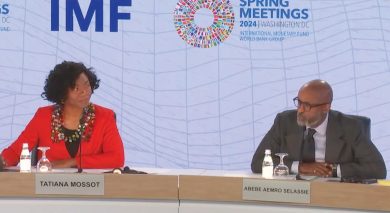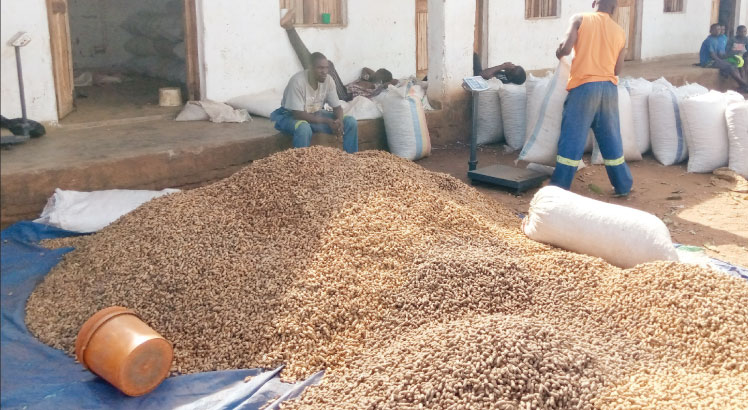Nyala rubies, Malawi’s economy: Is there a way out?

Who would believe Chimwadzulu has anything special and so precious?
Its road is bumpy, dusty, and its villages have nothing special. Most houses are grass thatched, and children running around barefoot. But this is the home to Nyala rubies—one of the most precious stones discovered about 50 years ago.
Precious, exceptional Nyala Rubies
Nyala rubies are some of the most precious stones according to Nyalaruby website. The precious stone includes orange, red to vivid red ruby, and pink to orange sapphire,
The website touts the stones as a rare ruby mined only at the Chimwadzulu mine in Malawi with sizes ranging from small accent stones to a spectacular 7-carat gems.
They are available in varieties including brilliant and Portuguese rounds, emerald cuts, ovals, cushions, and trillions.
The website describes Nyala Ruby and Sapphires as exceptionally well cut for corundum, which is so valuable that many producers sacrifice brilliance for weight.
It further says Nyala Rubies and its cousins Sapphires are guaranteed not to be enhanced in any way which is in contrast to most rubies and sapphires on the market which are heated to enhance their colour and clarity.
According to the website, rubies can sell from as low as $500 (K170 000) to $12,000 (K4.08 million) per carat (200 grammes) for stones from a half-carat to three carats.
But recently concerned citizens comprising small scale miners and traditional leaders raised eyebrows on the operation of the mine and the contribution of the precious stones to the economy and specifically the surrounding area since the stones were discovered in the area about 50 years ago.
Mining management
The citizens noted that if well managed the mine can raise government revenues if the mine can be properly managed.
They also noted the mine operators have no corporate social responsibility to ensure the surrounding community benefits.
Representatives of Gemstones Association of Malawi, Blantyre Mining Association, Women in Mining and Chichiri Mining Cooperative during a surprise visit to the mine accompanied by Traditional Authority (T/A) Mpando recently, argued that for the past 50 years the mine has been benefitting only foreigners.
They noted that the mine has been operated by foreigners since the discovery of the mine and Malawi has benefitted very little from the precious stones and demanded small scale miners and the community gets a cut from the mine.
And responding to the claims Nyala Mines current operators, managing director Abduhul Mahommed argued that they have not started selling the stones and they are still building inventory to satisfy customer requirements across 16 colours.
He noted he also had misleading expectations from the mine which prompted him to buy a plane but so far he has been shocked with what he is getting from the mine.
Mahommed further noted that Nyala is ready to help small scale miners through marketing and technical assistance. He added that gem experts would be arriving in the country later this year and encouraged stakeholders to engage with them. He expressed their intentions to invest in a stone cutting factory in the country.
In terms of employing locals, Mahommed argued that Nyala Mines employs locals from the area but there are specific areas in which locals may not be engaged.
He noted that the mine was closed for almost three years before he arrived because the previous operators were not getting good returns. But he expressed confidence that based on the team that they have managed to build they will bring the mine into commercial production and make the strides it has been promising since 1958.
Botswana diamonds, Malawi mining
Botswana is one of the richest economies in Africa on a GDP per capita basis, thanks to its minerals industry which is the mainstay of the economy since the early 1990s. And diamonds being the leading component of the mineral sector since large-scale diamond production began 25 years ago.
According to available statistics mining accounted for about 38 percent of Botswana’s real gross domestic product (GDP), and more than 50 percent of government revenues.
Debswana—a 50-50 joint partnership of De Beers Centenary AG and the Botswana Government—accounted for all diamond production in Botswana from its four mines. The mines include the 34-year-old Orapa Mine, 23-year-old Jwaneng Mine, the 20-year-old Letlhakane Mine, and the two-year-old Damtshaa Mine.
Reports indicate that De Beers and the Government agreed that some of De Beer’s Diamond Trading Company’s operations would move from London to Gaborone, Botswana arguing that local marketing of domestically produced gemstones would help the local diamond cutting and polishing companies.
However in Malawi, available statistics indicate that mining contribution to GDP rose to 10 percent following the opening of the Kayelekera Uranium Mine.
According to Reserve Bank of Malawi (RBM) data, mining and quarrying grew 525 percent from K7 billion in 2009, to K44.7 billion in 2010, shrank by 2.2 percent to K43.7 billion in 2011, rose by 14.6 percent to K50.1 billion in 2012 and is expected to rise to K59 billion in 2014.
However, GDP at constant 2007 prices stood rose by 9.5 percent from K868 billion in 2009 to K951 billion in 2010, rose 3.8 percent to K1 trillion in 2011, and is projected to hit K1.1 trillion in 2014.
Malawi government policies
Malawi is traditionally considered as an agro-based and not a mineral-based economy. It has been argued that this is because of the policies that government pursued since independence leading to a lack of mining culture, little technical capacity and inadequate foreign and local investment which contributed to the slow development of the industry.
However, government in April this year launched the minerals and mining policy.
Through the policy, government is convinced that if the country’s mineral resources are fully exploited, the contribution of mining will increase to at least 20 percent within the next 10 years.
The Government of Malawi recognises that the minerals sector has a significant potential to contribute towards the rapid economic growth and development of the country. Currently, the sector is still very small despite its favourable geology and known mineral potential.
Mining is expected to surpass the contribution of agriculture to GDP which is currently at 30 percent. This will be a gradual process considering that the mineral sector contribution to GDP is currently at 10 percent.
The policy however, notes that there are a number of issues such as inadequate geological data and information about the mineral deposits, inadequate mineral processing and analytical laboratory technologies and human resource within the country.
The 2013/14 national budget and the economic Recovery Plan (ERP) both recognise the five key sectors including mining as critical areas to for economic growth.
Government re-introduced a provision under the Customs and Excise Tariffs Order to allow for exemption of taxes on importation of specialised mining and exploration machinery and equipment in order to encourage exploration and mining activities in the country.
Minister of Mining, John Bande, in a telephone interview on Tuesday said government has policies and strategies to ensure that Malawians benefit from the sector.
He added that government has mines inspectors to ensure that ensure that the country benefits from the mining sector.






Please fellow Malawians, let us not rush to produce articles which are misleading. How do you compare diamonds to rubies, the economy of Botswana to Malawi, of course each one with different GDP,did you consider the number of mines versus the geological set up?
Please Gemstone Association of Malawi, Blantyre Mining Association, Women in Mining and Chichiri Mining Coorperative learn to be honest with yourselves before you attack others.
is this hearsay or facts?